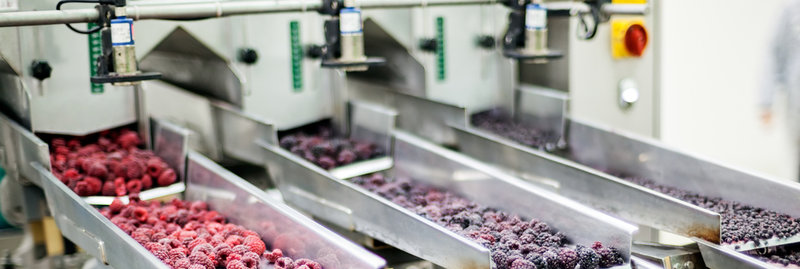Water security is a growing concern for the Australian food processing sector. Australia’s variable climate and population growth will continue to impose significant pressure on water supply. Industry’s vulnerability becomes particularly evident during times of drought where there is often strong pressure from the community for industry to demonstrate best practice water consumption. This includes efficient water use, reuse and recycling measures that can improve security of supply. For food processors, water reuse and recycling create a challenging situation where community concerns for food safety needs to be balanced with competing demands for water and environmental stewardship.
Many food processors, such as those from the meat, dairy and fruit and vegetable sectors, consume significant amounts of water. Water is often a product ingredient and is required to operate utilities such as boilers and cooling towers. The requirement to operate under stringent food safety regulations coupled with the need for strict food hygiene also dictates that large amounts of water must be consumed for cleaning and sanitation purposes.
The Australian Red Meat Processing sector is seeking to address water security on a number of fronts. In 2017 the Australian Meat Processor Corporation commissioned The Ecoefficiency Group to work on three initiatives water conservation and management projects.
1: Water reuse and recycling opportunities using the HACCP Risk Management Framework
This project included a review of the status of water consumption and recycling in Australian meat processing facilities. Following this, two guidelines were produced to help facilitate a greater level of water recycle and reuse in meat processing and to reduce the risks. These were – the AMPC Guideline for Water Recycling and Reuse in Red Meat Processing and the Recycled Water Management Plan for Red Meat Processors (template document). The prototype documents describe requirements for a risk-based plan (HACCP) for Direct Potable Reuse (DPR) of treated wastewater. Johns Environmental also provided a cost-benefit analysis for an Advanced Wastewater Treatment Plant (AWTP) with seven scenarios of varying treatment volumes, water supply and discharge costs.
2: Online training modules for wastewater treatment operators
This project involved updating and consolidating several word-based documents and transforming them into digitised, online, interactive training modules on managing wastewater treatment plants and biogas production. The package includes videos with site footage and operator interviews, fact sheets, checklists and quizzes. The flexible training package allows meat processing industry workers to access training at a time and pace that suits them and allows for different learning styles. A sample of one of the videos can be found here.
3. Stormwater Management in Meat Processing
This project reviewed how Australian meat processing companies are managing stormwater runoff; emerging technologies and current best practice management. The project included a techno-economic assessment of five commercially available technologies and development of the Good Practice Stormwater Management Framework. The framework enables meat processors to identify stormwater contaminants, treatment opportunities and best management practices that are tailored to their individual situation.
Copies of the reports can be found on the Australian Meat Processor Corporation website or www.ecoefficiencygroup.com.au or by contacting us – info@ecoefficiencygroup.com.au

